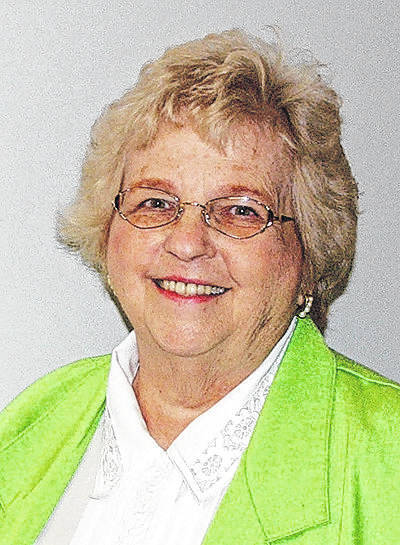
Unfortunately Xenia did not become a major automobile manufacturing site, but at one time, there were two different cars manufactured here.
Brothers Jake and Fred Baldner manufactured a horseless carriage and drove it on the streets of Xenia for the first time on April 24, 1900. The vehicle had room for the driver and a passenger seated next to the driver and some additional space in the back.
Cars were started with a hand-cranking device attached to the engine on the car and after several turns of the crank the engine (hopefully) would start.
One of the earlier incidents which nearly halted their entire was the day Jacob was driving the car through Xenia. A horse pulling the rig of a young lady was frightened by the noise and bolted, leaving the lady in distress. Being a gentleman, Jake jumped from the auto and rescued the lady. Unfortunately, he forgot to stop the car and it continued to run away as well.
Another incident occurred while trying to sell a car to a customer. Jake started the engine and had the man get into the driver’s seat. The man drove the vehicle around the block and shouted and waved at Jake. A second and third time the customer came around the block, yelling and waving while Jake waved back. Once more, the man drove past Jake, this time yelling “How do I stop it?” Jake yelled back “It will run out of gas.”
The Baldners did not succeed in making their car a huge success, but they did perfect a transmission which was a considerable improvement. Henry Ford adapted this technique and for some years the boys tried in court to prove that it was their invention and not Ford’s to no avail.
Finally, Jake and Fred gave up the business of making their own car, but they did not lose interest in cycle cars.
They had begun their manufacturing business in a building at the corner of Whiteman and Church streets. They leased the building to Paul Hawkins who manufactured another cycle car.
The year was 1914. Hawkins was aware that some folks had been manufacturing a new-fangled device which would replace the horse and buggy for transportation and he wanted to be a part of that trend.
Hoping to make a great deal of money with the proper backing, he met with a group of men in February with the hope of raising $10,000. Three men agreed to fund the project, having seen the prototype he presented. His proposal was to build a narrow gauge auto complete with dele to cycle, air cooled engine. The car measured about 40 inches wide and eight feet long.
The Hawkins Cycle Car company was incorporated with a starting amount of $30,000. The car needed a name. At first “Hawk” was proposed, but finally the name “Xenia” was chosen in honor of the city in which it would be built.
The car would be powered by a DeLuxe twin cylinder motor, capable of attaining a speed of 60 miles per hour. It could run 11 hours with gas consumption estimated at two cents per mile. I strongly doubt with the roads at the time that the car would ever need to travel at 60 miles per hour
The car weighed about 550 pounds and was priced at $385 while other similar vehicles were selling for $1,000. Tires were priced at $35 per tire and promised to be good for 7,000 miles.
The Xenia Gazette printed the following: “There is nothing but bright outlook for the success of the car and it is only just that every Xenian should boost this car and by doing so will boost Xenia.”
Things were going well for the fledgling company. A distributor on the west coast placed an order for two of the vehicles to be sent to New York. He and a mechanic would then drive them from to the west coast, in hopes of selling a number of them.
John Baldner, along with a friend, drove the car to Columbus to enter a race designed for cycle cars. Baldner won first place in the five mile race, defeating a car made in Detroit and another from Illinois. The Xenia was entered in three other races where it finished second, third, and fourth. The car had proven its worth and the investors were very happy.
The Xenia was a huge success. It seemed this would be the car of the future.
Jake Baldner drove one of the cars in Dayton in September 1914. He was arrested for speeding. The car was moving at the very fast rate of 25 miles per hour. He and his companion were each fined one dollar for every mile gone over the speed limit.
Sadly, the project which began with great enthusiasm in February 1914 was almost a memory at the end of the year. The shareholders of the Hawkins Cycle Car Company filed dissolution papers on Nov. 14, 1914, only months after the corporation had been founded with such enthusiasm.
About 25 cars were manufactured and one is known to survive. It has been restored and is in the Museum of Dayton history.
Remembering Walter Buffington
Walter Buffington joined the Xenia Fire Department in 1926. He rose to the rank of lieutenant in 1929 and in 1947 became captain. Three years later, he became chief of the fire department. He instituted regular fire inspections of buildings to ensure adequate safety. Under his direction, Fire Station No. 1 was modernized and in 1970 he supervised the construction of station No. 2. He was a life member of the International Fire Chiefs Association and the International Association of Arson Investigators. He served 47 years with the fire department. He died at the age of 85 and is buried in Woodland Cemetery.
— Joan Baxter
Joan Baxter is a Greene County historian and resident.

